I tried Logseq's new whiteboard feature!
I’ve been contributing to Logseq for a couple of months now, as a backer — meaning $5 monthly donations to the team, who’s been doing a great job. This has already entitled me, in the recent past to testing their sync feature, which has been working like magic for me, allowing me to write or capture thoughts, texts and snippets in my iPhone and have them appear in my Windows PC, or vice-versa.
But the one feature I’d been wishing for this Christmas was the app’s whiteboard. Just a couple of days ago, Obsidian released their canvas, and they’re both meant for the same use case: having an infinite mindmapping, brainstorming or creative space. No matter how far you move or how much you add there, Obsidian and Logseq, and their respective canvases and whiteboards will encompass what you have in your mind.
Trying Obsidian canvas is something I haven’t done yet — it requires the 1.1.0 application version which, as I write, is an insider-only build. But I’m very impressed with what I saw tonight in Logseq’s whiteboard.

I am no specialized critic or anything, but one thing I know for sure: I’ve always been in love with canvases, mindmaps and brainstorming. As of lately, I was thinking of acquiring a version of Scapple, just to be able to use its wonderful canvas. I’ve been trying to improve as a writer, so it would help me placing story elements where they belong. But Logseq whiteboard feature has just made me realize I don’t need any other tool besides it.
I could place squares, rectangles, freeform text. Arrows and boxes, color them. Bold the text and make links to internal pages (which, once linked, opposite to what I have heard about Obsidian canvas, already appear on the page as backlinks). I could also remove the background of the drawings and paste images copied straight from my Google Chrome browser to Logseq, and it worked very fine.
Logseq is such a marvelous piece of software. It made me rediscover my writing, my ideas and made me start to feel like creating a digital garden somehow. I’m really looking forward its further development to see where things are going. But, for tonight, just because I have this new canvas to play around with and unleash my creativity, I’m the happiest man I could become so far.
It’s like getting an anticipated Christmas gift.
I have created a Hugo Shortcode to display my “Currently reading” books, as they’re listed at Literal.club. The thing is: although I’ve tested it locally with Hugo and it worked in my machine (see picture), I know neither how to incorporate it to my current MB setup (a.k.a. the lovely Cards theme), nor how to turn it into a plugin. Any ideas?

O jarro da felicidade
“Be happy. Not because everything is good, but because you can see the good in everything.”
Eu não sei de quem é a citação que reproduzi acima. Porém, ela tem tudo a ver com uma conversa que estava tendo com um amigo esta semana no trabalho, sobre como nós, seres humanos, somos capazes de nos concentrar muito mais nos momentos ruins da nossa vida cotidiana do que nos momentos bons. Seja quando o pneu do nosso carro fura, quando a gente queima a pipoca antes de assistir a um filme, quando uma reunião não vai tão bem quanto a gente esperava ou até quando a gente se sente menos do que poderia ser.
A gente começou a refletir que deveríamos ser mais capazes de focar naquilo que nos realiza, que nos deixa felizes, embora isso possa em princípio ser difícil.
Mais tarde, nesta mesma semana, estávamos em uma apresentação de final de ano, onde listamos todas as nossas conquistas. Não apenas meu amigo da conversa anterior e eu, mas toda a equipe. Entre as diversas pessoas que falaram neste outro dia, um outro amigo começou coincidentemente a nos falar sobre os aspectos positivos, sobre como eles precisam ser lembrados. No meio de cada batalha diária, sempre há momentos bons. Foi quando ele disse que conhecia um conceito que, dada sua simplicidade, poderia até ser considerado bobo por alguns.
A gente deve criar o hábito de ter um jarro da felicidade.
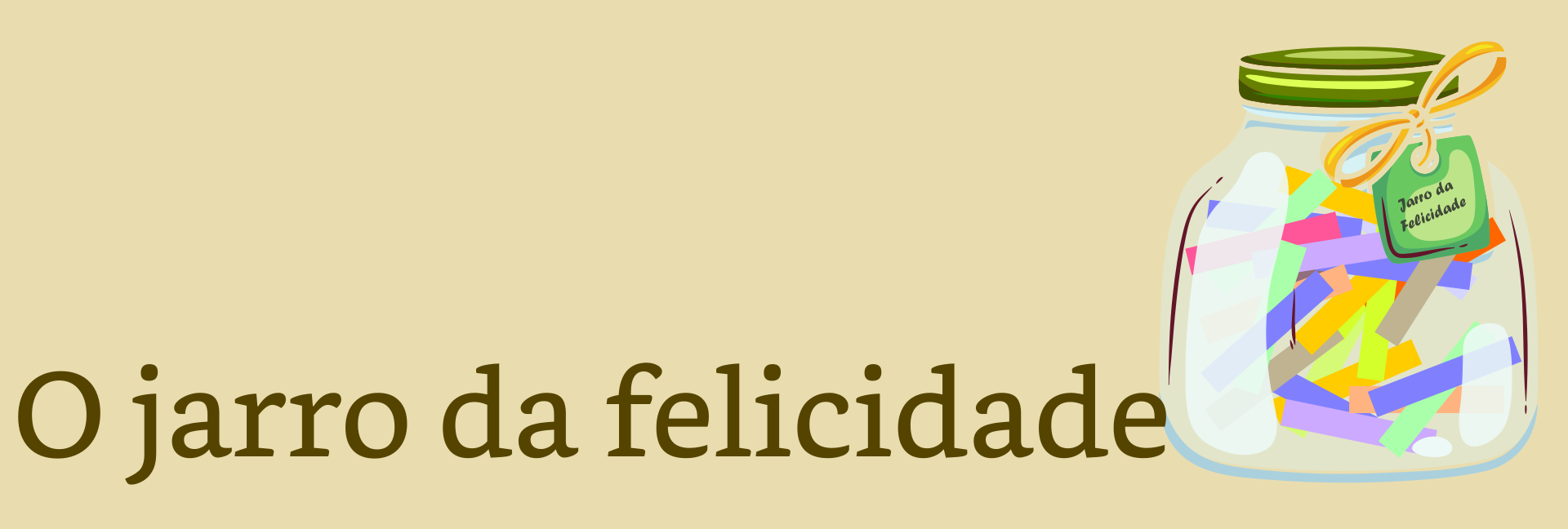
O jarro da felicidade, segundo ele nos explicou, me pareceu uma das maneiras mais simples de melhorar nosso humor e nos fazer refletir sobre como devemos ser mais gratos em relação ao que temos, ao invés de ficar trazendo à tona os momentos ruins. E é tudo muito simples: você pega um jarro — que pode ser um jarro de vidro, de plástico, pode ser uma caixa de lenços de papel ou qualquer outra coisa, de fato, pois é apenas um meio — e começa, diariamente, a escrever, em pedaços de papel, tudo aquilo de bom que tenha acontecido com você e também aquilo pelo que você deve agradecer.
Comi meu prato favorito no almoço, tive uma conversa muito boa com um amigo que não vejo há meses, aprendi uma coisa nova, ou fui elogiado por uma apresentação, são todas coisas que me vêm à mente agora, enquanto escrevo este texto, e que poderiam facilmente fazer parte do meu jarro da felicidade. Pode ser qualquer coisa, de fato, que, ao ser relida, te traga um pouco mais de ânimo, de felicidade… que te provoque um sorriso no rosto. E é simples assim. E por ser tão simples, você deveria começar a praticar, exatamente como eu vou fazer.
Para finalizar, eu agora percebo que sabia duas coisas sobre o jarro da felicidade das quais não me dava conta antes.
Primeiro, o jarro não precisa ser físico. Quando nosso amigo nos falou sobre a técnica do jarro, aliás, a primeira coisa que me veio em mente foi a técnica de journaling. Escrever uma nota no celular, escrever em um arquivo de texto… novamente, tanto o celular quanto o arquivo são apenas os meios. E o jarro, sendo uma metáfora, deve ser pra nós aquilo que seja mais fácil de encher com fatos e momentos positivos.
Segundo, juntamente com aquilo que se escreve para colocar no jarro, qualquer que seja ele, é muito interessante citar nomes de pessoas e associar datas e ocasiões. Mais tarde, quando estivermos relendo aqueles pedacinhos de felicidade e gratidão, certamente nos lembraremos da época associada e isso poderá nos trazer um melhor contexto e, quem sabe, até mesmo novas lembranças para o nosso eu futuro, que serão igualmente depositadas no jarro.
My personal view on Netflix’s Wednesday
📺 I have just finished watching Wednesday season 1 on Netflix, and although I’m suspicious to say, because I’m an Addams Family fan, cannot wait for season 2 to air later, sometime soon in 2023.
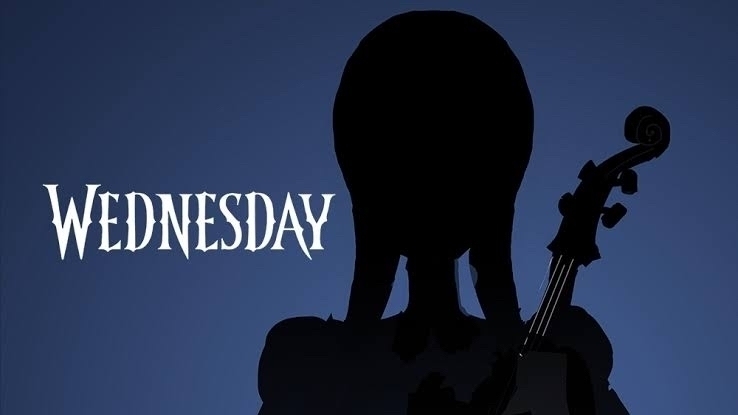
Not only has Jenna Ortega excelled in her role as Gomez’s and Mortitia’s daughter — and leading role —, but also the series, to my liking at least, had the perfect (dark) humor, thriller, horror and mystery mix. I know some people will say the series doesn’t live up to its first episode, but I have to disagree.
Wednesday has a very good balance in its plot, and lots of twists, also. For times it also resembles Harry Potter, Scooby Doo and even bloodier titles like Mr. Martin’s GoT series. It made me, my wife and son stick to the couch anxious for the next episode, and the next, and the next. We all here more than recommend it.
Give it a try and you won’t regret it.
Reading goal
📚 I’m one book away from completing my reading goal for 2022, consisting of 15 books. I’m already reading the 15th one but sometimes due to lack of time, I feel as if I won’t be able to accomplish it, and that would be the first time in like 5 or 6 years… are you guys so strict as I am in terms of achieving your personal reading goals?
I'm not young enough to know everything.
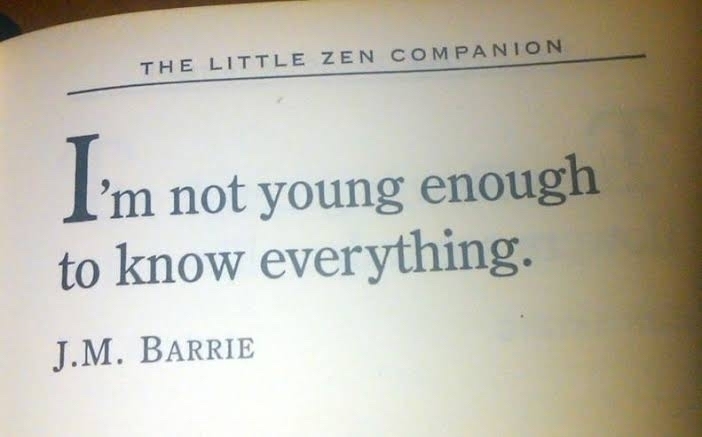
I came across this quote earlier today, while researching about the expert’s fallacy and how all of us are subject to it.
First I thought the quote was from Oscar Wilde, the Irish writer, as it is attributed to him very much often. But what do I know? I fell for the same fallacy and ended up finding out it’s actually a quote from J. M. Barrie, the English playwright behind the wonderful Peter Pan.
As someone deeply interested in — but almost completely new to — the subject of lifelong learning, I saw this sentence as completely fit to the theme. It is now side by side with my (other) favorite quote to date, from René Descartes, French mathematician who said “I would give everything I know for half of what I ignore”.
Young people — or anyone new to a subject or activity, actually — tend to assume a position of confidence in knowing “all” about that subject, or, at least, knowing more than they actually know about it. Only as we grow older, or more experienced and move from beginners to experts in our careers, do we tend to admit that we don’t know — and couldn’t ever be able to know — everything there is to know.
And this is what I found is so brilliant about the quote which titles this text. It’s an advice to all of us who are aware of not knowing everything. It is an advice to keep humble, to keep in mind there will always be oceans of knowledge to sail, and to keep learning.
The perfect date
Believe me. Everyone has the right to see their idea of a perfect date come to life. Even if their idea of a perfect date is YYYY-MM-DD, the format set out by the ISO 8601 standard to tackle misinterpretation problems that happen when we write dates using numbers.
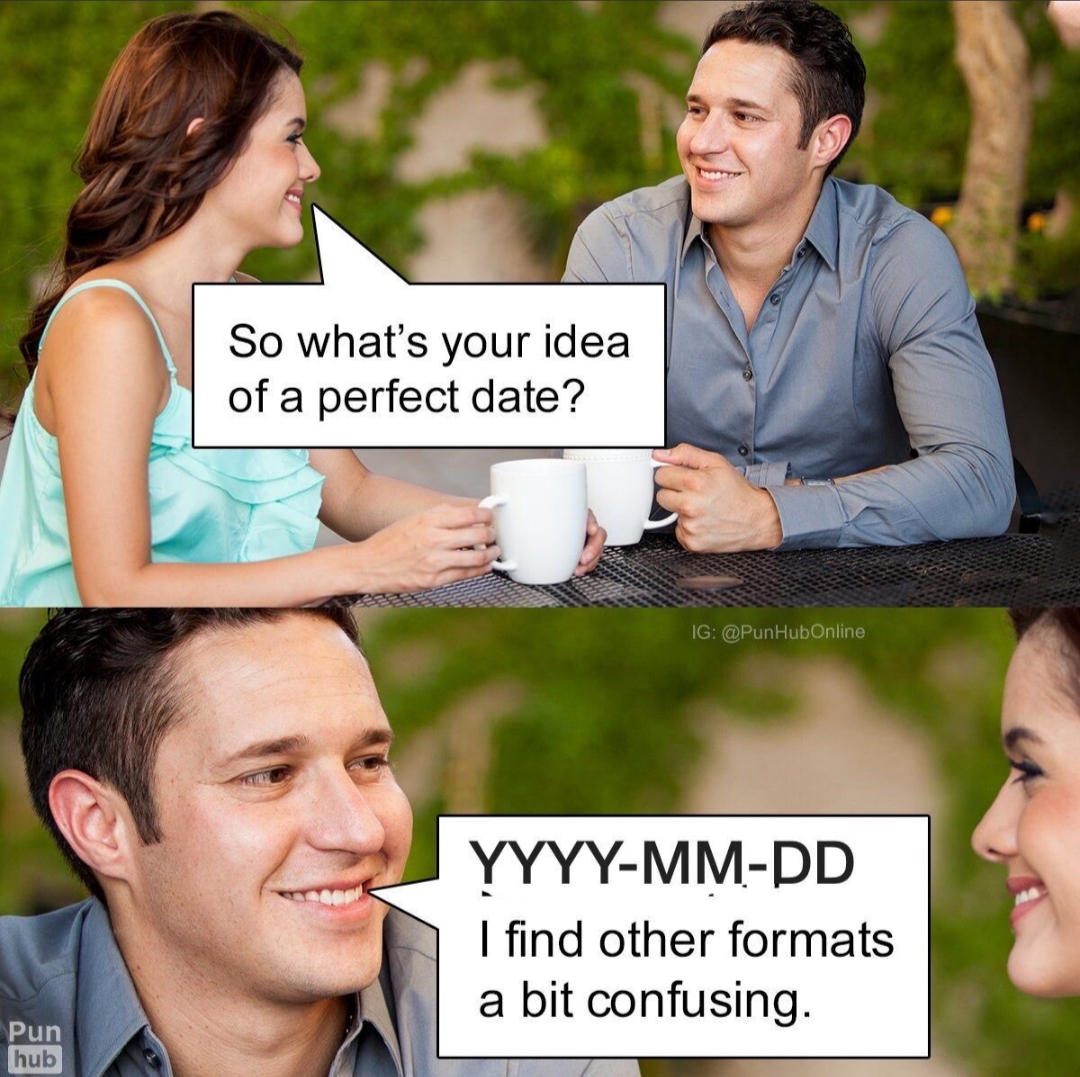
YYYY-MM-DD is, indeed, my idea of a perfect date. Pun intended.
I live in Brazil, and my country, where we speak Portuguese, goes by the British date format, which is DD/MM/YYYY. The company I work for, on the other hand, is a multinational one, adopting American English as its main language, and its MM/DD/YYYYas the date standard. This could potentially cause problems when talking about, and writing down dates using numbers.
Take 06/09/17, for instance. Does it mean the 9th of June, 2017, or the 6th of September of the same year? During our daily conversations in the company, this kind of confusion is subject to happening because we do write drafts in Portuguese, for example, and sometimes, even local references which are not going to be shared with the general internal public. A second point to consider is the language set to the interface the softwares we use. Mine are all in English, but I have many colleagues who have their software (and date formats) set to Portuguese.
Adopting ISO 8601’s date format is such a clever idea that even Randall Munroe, the brilliant mind behind the excellent xkcd webcomic, translated it to one of his masterpieces:
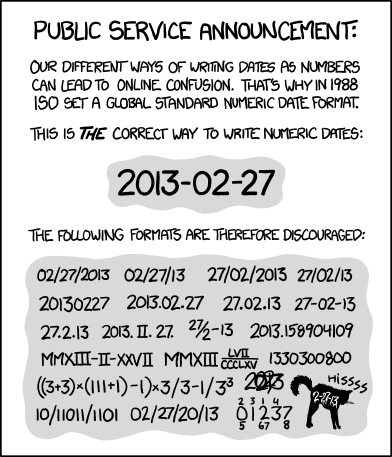
Adopting ISO 8601’s date format, YYYY-MM-DD, puts an end to any frustrating situation that could be caused by a misunderstanding, especially in a business context. You won’t go to a meeting in the wrong date, or buy those materials when the date is unclear. In ISO 8601’s format, 06/09/17 becomes 2017-09-06, and that’s it.
Need to express dates? Think about this perfect date.
Live another day
I’ve been broken,
I’ve been beat down
So full of shame and doubt
Been from the mountain, down to rock bottom
More times than I can count
But we were born to be great
Don’t just throw it away
(…)
Live another day
— Memphis May Fire
O meu, o seu… o nosso melhor não é o mesmo todos os dias. Hoje ele pode ser de um jeito, ontem pode ter ficado num patamar mais baixo, melhor que o de anteontem e pior do que ele será amanhã. E tudo bem, tudo certo, a vida é assim mesmo.
Como na música do Memphis May Fire que eu citei acima, você pode até apanhar, se quebrar e ter dúvidas, mas nunca deve se esquecer de que nasceu para coisas grandiosas, e que viver outro dia sempre vale a pena.
Costureira
Minha avó era costureira das boas, e durante muitos anos dar aulas de costura foi o que ela fez para criar minha mãe e meus dois tios no interior do estado de São Paulo.
Morando com minha mãe depois que ela e meu pai se casaram, tive oportunidade de ver ela costurando em casa: fazia roupas pra fora e roupas pra mim e minha irmã também. Visitava as lojas de tecido na nossa cidade e comprava metros de pano com os quais produzia suas obras de arte. Me lembro especialmente dos fantásticos pijamas de flanela que ela criava pra gente e que eram tão quentinhos no inverno.
Saudades da minha avó.
Fast forward to 2022. Em busca de alguém que pudesse reformar uma camisa social de manga longa que eu adoro, para transformá-la em camisa de manga curta, encontrei uma costureira no bairro vizinho, com quem deixei a camisa.
Hoje fui buscar a camisa e, enquanto falava com a costureira, contei pra ela sobre a minha avó, e sobre como eu admiro quem sabe costurar.
Ela me disse algo que é a mais pura verdade: praticamente ninguém mais se interessa por aprender a costurar, e em 20 anos ou menos, a profissão dela e da minha avó terá praticamente desaparecido.
“No futuro”, ela disse, “as crianças de hoje mal saberão trocar a resistência de um chuveiro, que dirá saberem costurar”.
Concordei. E deixei mais três camisas para reformar e buscar na semana que vem.
Saudades da minha avó.
Bestsellers
I came across this interesting post about bestsellers on Mastodon, from @bridgetmapes@mastodon.social, where she saw the following statement during a discussion about bestsellers:
“Bestsellers aren’t bestsellers because they are good. They’re bestsellers because someone spent a lot of money on marketing or otherwise scammed the system into thinking they were good.”
How much do you 📚 book lovers agree with it?
O avô, o neto e o burro
…ou, o que fazer em relação a críticas.
Certamente, se você vive entre os seres humanos, já deve ter recebido alguma crítica que considerou injusta, ou mesmo maldosa.
Por isso eu resolvi compartilhar esta versão da conhecida fábula de Esopo, que traduzi livremente, a partir deste texto que encontrei online:
O avô e seu neto iam ao mercado para vender seu burro.
Enquanto eles andavam pela estrada, iam a pé ao lado do burro. Então um camponês passou por eles e disse: “Seus tolos, para que mais serve um burro, senão para que se ande por aí em cima dele?”.
Então o avô montou o neto no burro e eles continuaram seu caminho até o mercado. Mas não demorou muito e cruzaram o caminho de um grupo de homens, e um deles disse: “Mas vejam só que menino mais preguiçoso! Deixa seu avô caminhar enquanto ele vai montado no burro!”.
Então o avô mandou que o neto desmontasse do burro e subiu no animal ele mesmo. Só que eles não tinham ido muito mais longe quando avistaram duas mulheres, sendo que quando passaram por elas, uma comentou: “Ora! Que velho mais sem vergonha! Deixando seu pobre netinho a pé, enquanto vai por aí todo folgado, montado nesse burro!”.
Desta vez o avô não soube imediatamente o que fazer. Porém, finalmente resolveu montar o neto à sua frente, e então recomeçaram o caminho para o mercado, os dois montados no burro.
Àquela altura, os três haviam chegado à cidade, e todos os que passavam por eles gesticulavam muito e apontavam os dedos em sua direção. Tanto que o avô parou o burro e perguntou o que tanto tinham visto para apontar-lhes as mãos.
“Vocês dois não tem vergonha de sobrecarregar com tanto peso um pobre burro como esse?”, responderam alguns deles.
O avô e seu neto então desmontaram do burro, e tentaram pra valer pensar no que podiam fazer. Depois de muito tempo tiveram a ideia de cortar uma vara, amarraram as patas do burro nela e ergueram a vara até seus ombros para carregar o animal.
Enquanto andavam, não puderam deixar de perceber as gargalhadas de todos que encontravam. Até que finalmente chegaram até a Ponte do Mercado, onde uma das patas do burro acabou se soltando da amarração na vara, e o animal, livre para tentar dar um coice, fez com que o neto derrubasse seu lado da vara.
Com todo o esforço feito, o pobre burro caiu da ponte dentro do rio e, com suas patas amarradas como estavam, o animal acabou se afogando.
A moral da história? Aquele que tenta agradar a todos, acaba não agradando ninguém.
Dark mode is the new black
Or, how I fell in love with it.
I never saw it coming. Little by little, I just changed all the apps I use to dark mode, be it Windows Explorer, be it any of my favorite iPhone apps. It was just a matter of availability. “Oh, you’ve (finally) made dark mode available for us, users? Got it”, I usually thought.
I’ve been a computer (and mobile) user for quite some time now. Many years. Enough to be able to say that clear, white-ish interfaces make my eyes soar. It is then undeniable, for me at least, to say that the dark mode feature came in handy. It makes me feel comfortable, it makes me feel nice and in peace with myself. The low contrast, the true black. It is charming. It is infatuating.
Yes. I guess this is a tribute to dark mode. That’s what it is. I never saw it coming, this love. Till the day when I entered a meeting and, during the smalltalk that usually happens before it starts, a friend told me she was arguing with the other participants, saying “people our age” (we are almost the same) “prefer to use the phone in light, traditional mode”. I told her I didn’t think so and, to make a point, showed her my iPhone screen and the dark mode.
I know that she got disappointed, probably. But making her temporarily sad was nothing compared to the continued bliss of using the dark mode.
A arma de Tchekhov
Anton Tchekhov (1860-1904) foi um dramaturgo e escritor russo que dizia que qualquer objeto apresentado ao público em uma obra de entretenimento deve ser utilizado em algum momento da trama ou descartado para não causar distrações:
Remove everything that has no relevance to the story. If you say in the first chapter that there is a rifle hanging on the wall, in the second or third chapter it absolutely must go off. If it’s not going to be fired, it shouldn’t be hanging there.
Em minha trilogia de filmes favorita, aliás, há um excelente exemplo de arma de Tchekhov: Na segunda parte de “De volta para o futuro”, o hoverboard fica dentro do Delorean depois de ser usado por Marty McFly para derrotar Griff Tannen. No terceiro filme, o mesmo hoverboard acaba sendo essencial não apenas para que Marty resgate Doc Brown e sua namorada Clara de um trem em alta velocidade, mas também para a construção do trem voador, baseado em sua tecnologia.
Aliás, como assisto a muitas séries e filmes e também leio bastante, tive oportunidade de encontrar muitos outros exemplos da arma de Tchekhov em ação: nem sempre é um objeto — pode também ser uma pessoa, um local, uma magia. Mas o fato é que toda vez que percebo algum elemento que pode vir a ser uma arma, já fico desconfiado e, se constato que era isso mesmo, fico bastante satisfeito.
Só que também gosto de pensar que a arma de Tchekhov se encaixa nos contextos da filosofia lean, do storytelling e da analogia do copo com água pela metade, já que para evitar distrações e desperdícios, a criação de histórias enxutas exige pensar muito bem no porquê de apresentar um elemento e em suas causas e efeitos, tanto quanto ao invés de ver o copo meio cheio ou meio vazio deve-se na realidade questionar se o copo tem o tamanho correto.